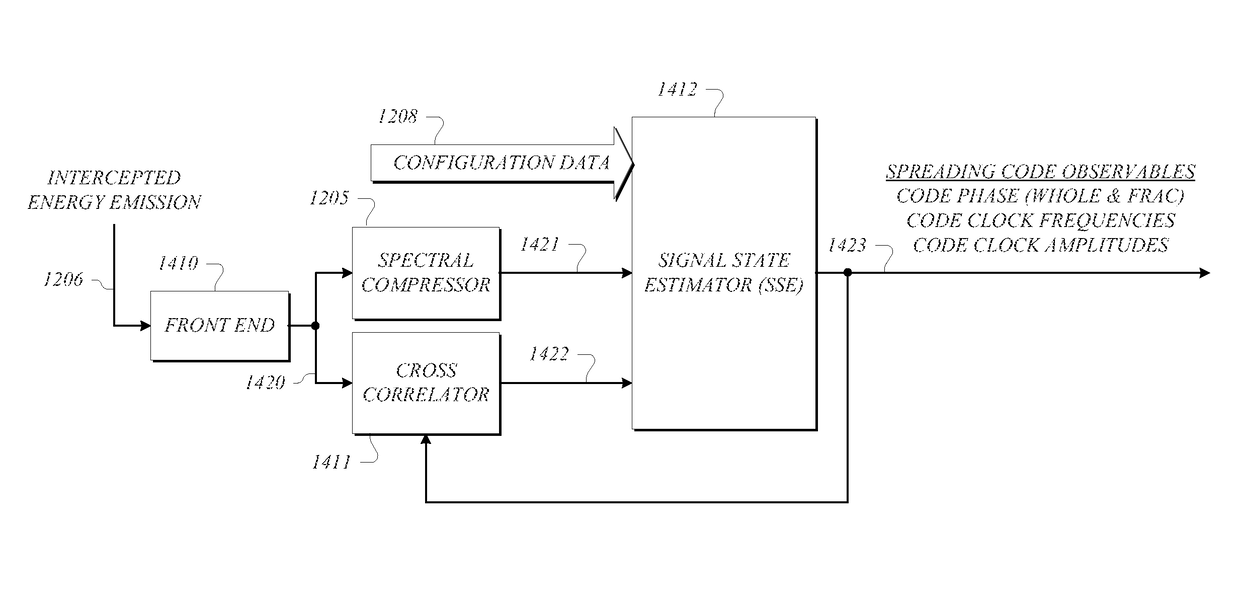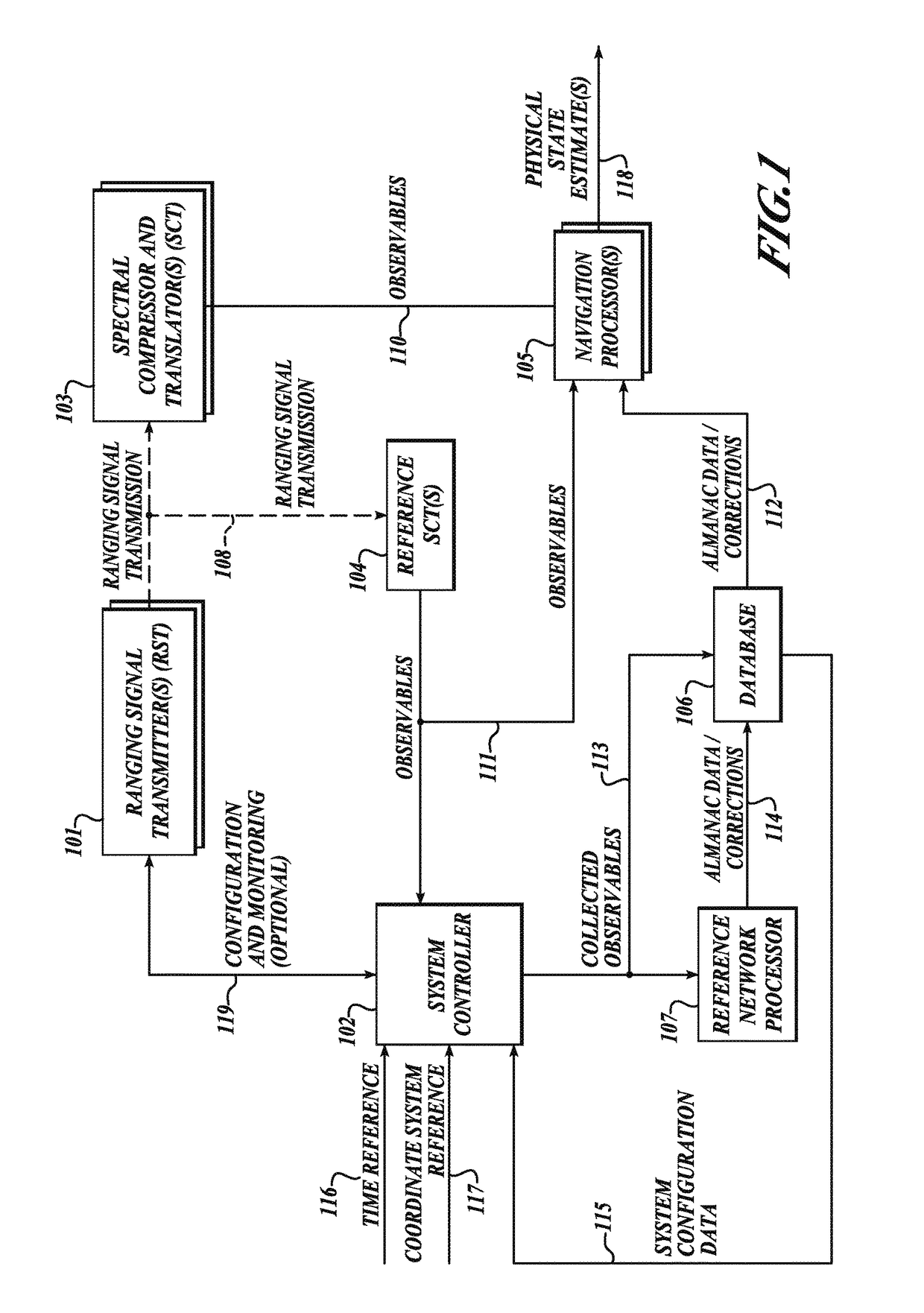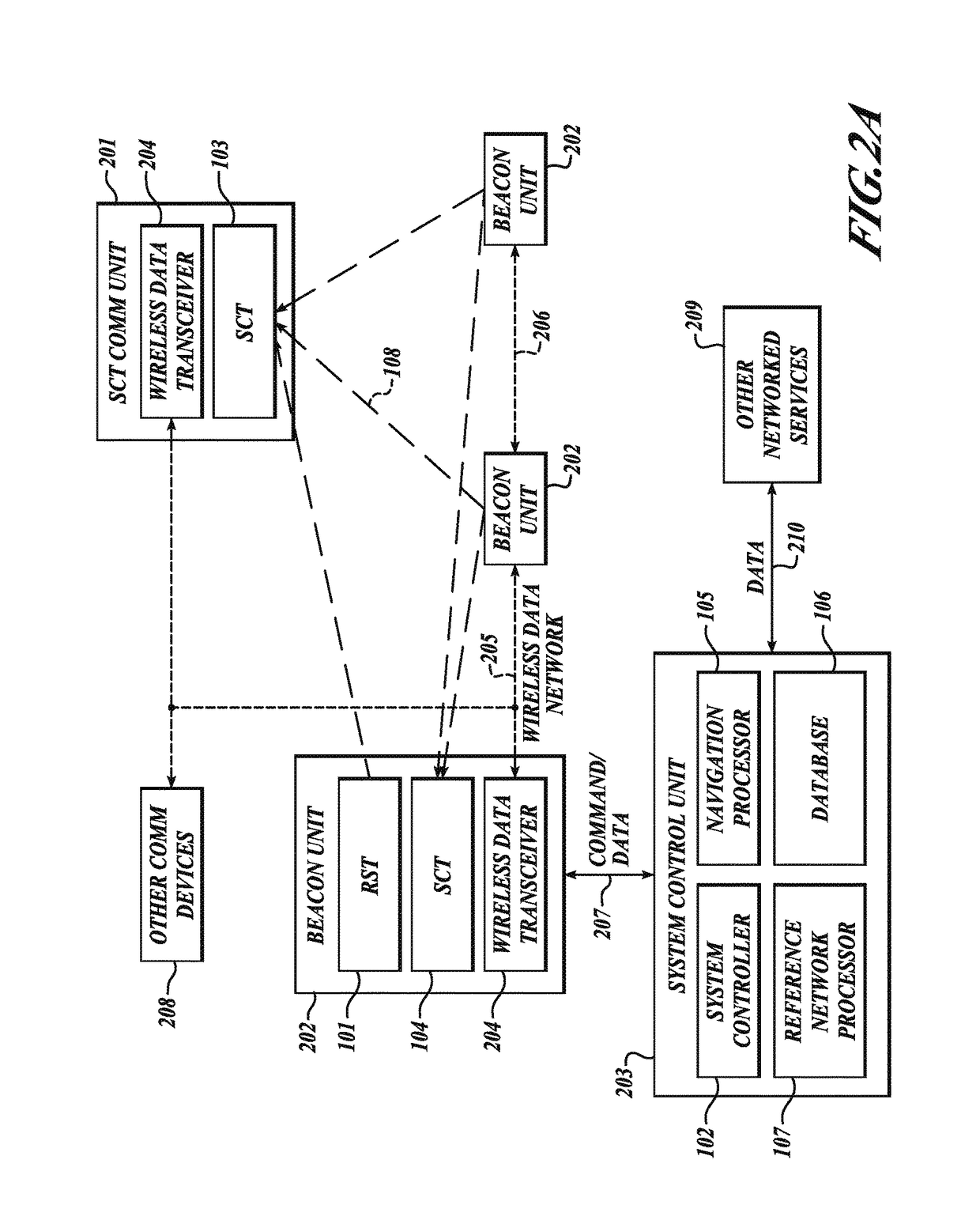GNSS long-code acquisition, ambiguity resolution, and signal validation
a long-code acquisition and signal validation technology, applied in the field of gnss, can solve the problems of difficult to operate high-power transmitters on orbit, difficult to operate positioning receivers in obstructed environments, and weak satellite-based navigation system signals, etc., to achieve rapid deployment, simple implementation, and cost-effective
- Summary
- Abstract
- Description
- Claims
- Application Information
AI Technical Summary
Benefits of technology
Problems solved by technology
Method used
Image
Examples
Embodiment Construction
[0079]There are situations in which a GNSS implementation for determining the physical state of some sensor is impractical because the satellites signals are either too weak, obstructed or interfered with by accident or intent. Such situations can occur in an enclosed space such as within a metal constructed warehouse, below ground / rubble, or possibly GNSS jamming environments.
[0080]By way of overview, the present invention utilizes a beacon constellation environment, which although low in transmitter power (<1 microwatt), provides signal flux that is 40 to 60 dB more powerful than GNSS signals and thus is able to determine the physical state of a sensor in missions where GNSS is either absent or unreliable in the context of a configured environment or, in other words, an environment in which there is the ability to deploy a beacon constellation in a manner that affords the maximum of flexibility for the system operator. The constellation of beacons uses spread spectrum techniques w...
PUM
 Login to View More
Login to View More Abstract
Description
Claims
Application Information
 Login to View More
Login to View More - R&D
- Intellectual Property
- Life Sciences
- Materials
- Tech Scout
- Unparalleled Data Quality
- Higher Quality Content
- 60% Fewer Hallucinations
Browse by: Latest US Patents, China's latest patents, Technical Efficacy Thesaurus, Application Domain, Technology Topic, Popular Technical Reports.
© 2025 PatSnap. All rights reserved.Legal|Privacy policy|Modern Slavery Act Transparency Statement|Sitemap|About US| Contact US: help@patsnap.com



